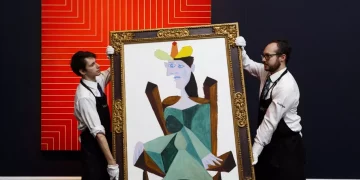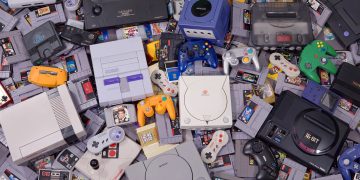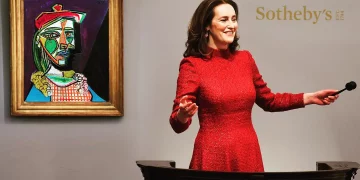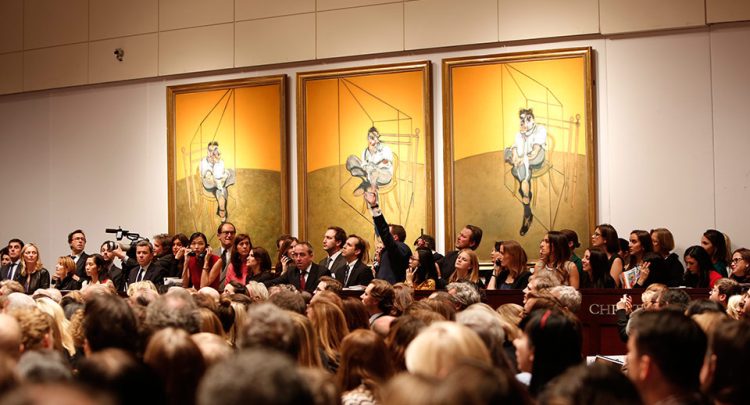As the global economic landscape continues to evolve, the collectibles market is undergoing a rapid transformation. From traditional art and antiques to modern-day limited-edition sneakers, digital art, and luxury collectibles, more and more investors are looking toward these alternative assets for potential returns. As demand continues to rise, many collectibles have seen their prices skyrocket, sometimes well beyond expectations. But what factors will continue to drive prices even higher in the future? Let’s explore.
1. Increased Cultural Significance
One of the primary drivers of price appreciation in the collectibles market is cultural relevance. Items that hold significant cultural or historical value tend to gain traction as they become symbols of status, heritage, or even nostalgia. As societies evolve, previously overlooked items may experience a resurgence in interest, thereby pushing their prices up.
- Historical Events & Iconic Figures: Items linked to major historical moments or renowned figures often gain increased value over time. For example, sports memorabilia connected to legendary athletes or objects tied to significant political events can become cultural treasures.
- Nostalgia: Items that evoke strong emotional memories, such as childhood toys or vintage video games, are especially popular with younger generations who seek to reconnect with their past. This emotional value can create long-term demand and drive prices higher.
Cultural significance is not static; it evolves over time. As new generations grow up with certain cultural touchstones, items related to those touchstones will likely continue to appreciate in value.
2. The Growth of Digital and Virtual Collectibles (NFTs)
One of the most significant shifts in the collectibles market over the past few years has been the rise of digital art and NFTs (non-fungible tokens). These assets have introduced a completely new paradigm for buying and selling collectibles, offering a level of security and provenance that was previously unavailable.
- Blockchain Technology: Blockchain has enabled a new way of certifying authenticity and ownership, which is key for the appreciation of digital art and NFTs. This technology ensures that every transaction is transparent, secure, and traceable, making digital art and collectibles much more reliable for long-term investment.
- Mainstream Adoption: As more artists, musicians, celebrities, and companies enter the NFT space, the demand for high-quality digital art and limited-edition NFTs continues to increase. High-profile sales, like Beeple’s $69 million NFT sale, have proven that virtual assets can yield significant returns.
Digital collectibles also benefit from the growing interest in the metaverse and virtual worlds, where NFTs can represent anything from virtual real estate to in-game items. This creates a multi-faceted market with high growth potential.
3. Limited Supply and Scarcity
The law of supply and demand is timeless, and it plays a critical role in driving prices up in the collectibles market. Items that are rare or in limited supply are naturally more valuable. Collectors and investors are willing to pay premium prices for scarce items, and this principle will continue to drive market dynamics in the future.
- Limited-Edition Releases: Brands in various sectors—whether in sneakers, watches, or high-end art—have embraced the concept of limited releases. The fewer there are, the more they become desirable. For example, limited-edition sneakers from brands like Nike and Adidas have seen their value explode due to their rarity.
- Discontinued Models: In the luxury watch industry, discontinued models often skyrocket in value once they are no longer in production. The same is true for vintage cars, rare wines, and collectible toys.
As brands continue to embrace exclusivity and limited production runs, the scarcity of certain items will continue to fuel demand and drive up prices in the long term.
4. Technological Advancements in Authentication and Grading
Technology is playing an increasingly significant role in the collectibles market, especially when it comes to authenticity and grading. Platforms that specialize in the verification and grading of items, such as PSA for trading cards or CGC for comic books, have made it easier for investors to buy and sell collectibles with confidence.
- AI and Blockchain for Authentication: As counterfeiting becomes more sophisticated, new technologies like artificial intelligence and blockchain are being employed to authenticate items more accurately and securely. Blockchain, for example, can offer permanent, tamper-proof records of ownership and provenance, which is particularly crucial for high-value items.
- Grading Services: The emergence of professional grading services that use standardized systems to assess the condition of items has significantly increased the market value of certain collectibles. Graded items, especially in the world of comics, trading cards, and fine art, are more easily traded and can demand much higher prices than non-graded counterparts.
These advancements make the market more transparent and accessible, which helps build confidence in the investment potential of collectibles.

5. Increasing Affluence of Younger Generations
As wealth continues to shift, younger generations—millennials and Gen Z—are becoming a major force in the collectibles market. These generations tend to place higher value on unique, personalized, and culture-rich items, which are often represented in the collectibles market.
- Younger Collector Demographics: Many younger collectors are entering the market with disposable income and a willingness to invest in items that align with their personal tastes, from sneakers and limited-edition fashion to digital art and NFTs. Their preferences tend to diverge from traditional investment options, making them more likely to place higher value on items that appeal to their cultural identity.
- Social Media Influence: Social platforms like Instagram, TikTok, and Twitter have given younger collectors a platform to showcase their collections and share investment insights. This social validation often drives demand, as many younger collectors seek status and recognition in digital spaces.
As younger generations continue to gain financial power, their interests and purchasing habits will further shape the future direction of the collectibles market.
6. Increasing Globalization of the Collectibles Market
The globalization of the collectibles market means that more investors from around the world can now access and invest in rare items. The rise of online marketplaces, global auctions, and digital platforms has made it easier for collectors to buy and sell across borders, leading to increased competition and, ultimately, price appreciation.
- Access to Global Markets: Platforms like eBay, Christie’s, and Sotheby’s now cater to a global audience, and with the increasing prevalence of online auctions and virtual galleries, geographic barriers are becoming less of an issue. Buyers from Asia, Europe, and North America are now competing for the same items, which drives up the prices.
- Diversification of Collectibles: Globalization has also led to greater diversification in the types of collectibles that attract interest. While Western collectors may traditionally focus on art or luxury watches, investors from emerging markets are increasingly investing in new areas like NFTs, sports memorabilia, or even regional collectibles that were previously overlooked.
This greater interconnectedness of the global market means that rare items will continue to become more valuable as competition for ownership intensifies.
7. Shifts in Investment Preferences and Inflation Hedge
In the face of rising inflation and economic uncertainty, more investors are turning to tangible assets like collectibles as a hedge against inflation. Unlike stocks or bonds, which are subject to market volatility, collectibles—especially rare ones—often retain or even increase in value over time.
- Alternative Investments: As traditional asset classes show signs of volatility, collectibles represent an alternative investment that is less correlated with the stock market. High-end watches, rare coins, vintage cars, and luxury handbags have all been increasingly used as stores of value in uncertain times.
- Hedge Against Inflation: As the purchasing power of currency decreases due to inflation, collectors view tangible assets as a way to preserve wealth. This demand for physical, scarce items will continue to increase as inflationary pressures mount.
This shift in investment preferences, combined with a growing interest in alternative assets, will likely push the prices of certain collectibles even higher in the future.
Conclusion
The future of the collectibles market looks promising, driven by a variety of factors that include increased cultural relevance, the rise of digital and virtual assets, limited supply, technological advancements in authentication, and the growing affluence of younger generations. As the market continues to evolve, the dynamics of scarcity, technological integration, and global demand will play crucial roles in propelling prices higher.
For investors and collectors, understanding these factors and staying ahead of market trends will be key to identifying high-growth opportunities in an increasingly dynamic and diversified collectibles market. As demand continues to outstrip supply, the most valuable collectibles will likely see even greater appreciation in the years to come.


















































